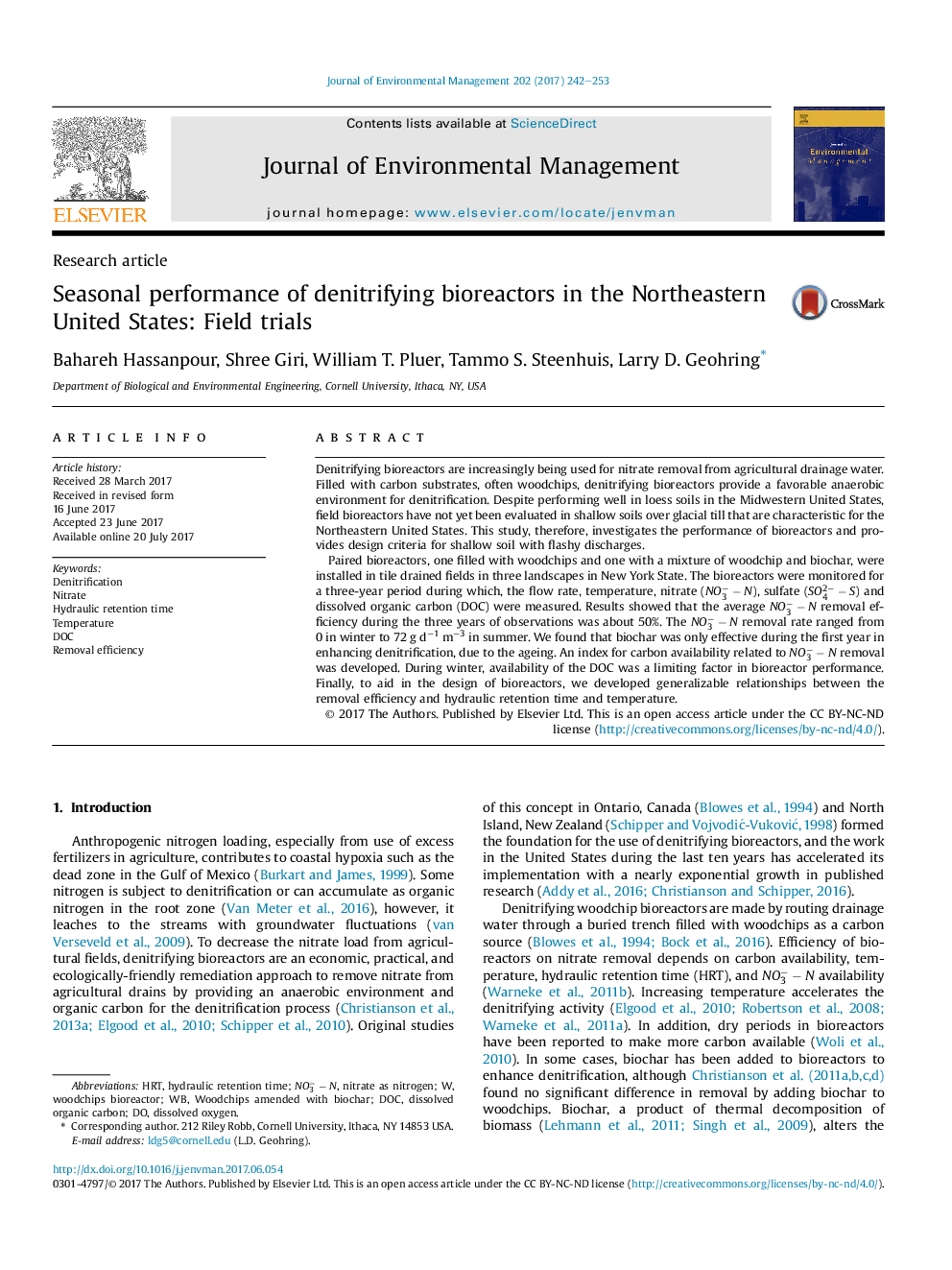| Article ID | Journal | Published Year | Pages | File Type |
|---|---|---|---|---|
| 5116474 | Journal of Environmental Management | 2017 | 12 Pages |
â¢Temperature and hydraulic retention time influenced the removal efficiency.â¢Nitrate removal rate increased dramatically with temperatures above 16 °C.â¢Nitrate removal relied on sufficient available carbon in the bioreactors.â¢Biochar was only effective during the first year in removing additional nitrate.â¢Bioreactor performance was depressed by large discharge events.
Denitrifying bioreactors are increasingly being used for nitrate removal from agricultural drainage water. Filled with carbon substrates, often woodchips, denitrifying bioreactors provide a favorable anaerobic environment for denitrification. Despite performing well in loess soils in the Midwestern United States, field bioreactors have not yet been evaluated in shallow soils over glacial till that are characteristic for the Northeastern United States. This study, therefore, investigates the performance of bioreactors and provides design criteria for shallow soil with flashy discharges.Paired bioreactors, one filled with woodchips and one with a mixture of woodchip and biochar, were installed in tile drained fields in three landscapes in New York State. The bioreactors were monitored for a three-year period during which, the flow rate, temperature, nitrate (NO3ââN), sulfate (SO42ââS) and dissolved organic carbon (DOC) were measured. Results showed that the average NO3ââN removal efficiency during the three years of observations was about 50%. The NO3ââN removal rate ranged from 0 in winter to 72 g dâ1 mâ3 in summer. We found that biochar was only effective during the first year in enhancing denitrification, due to the ageing. An index for carbon availability related to NO3ââN removal was developed. During winter, availability of the DOC was a limiting factor in bioreactor performance. Finally, to aid in the design of bioreactors, we developed generalizable relationships between the removal efficiency and hydraulic retention time and temperature.
Graphical abstractDownload high-res image (131KB)Download full-size image
